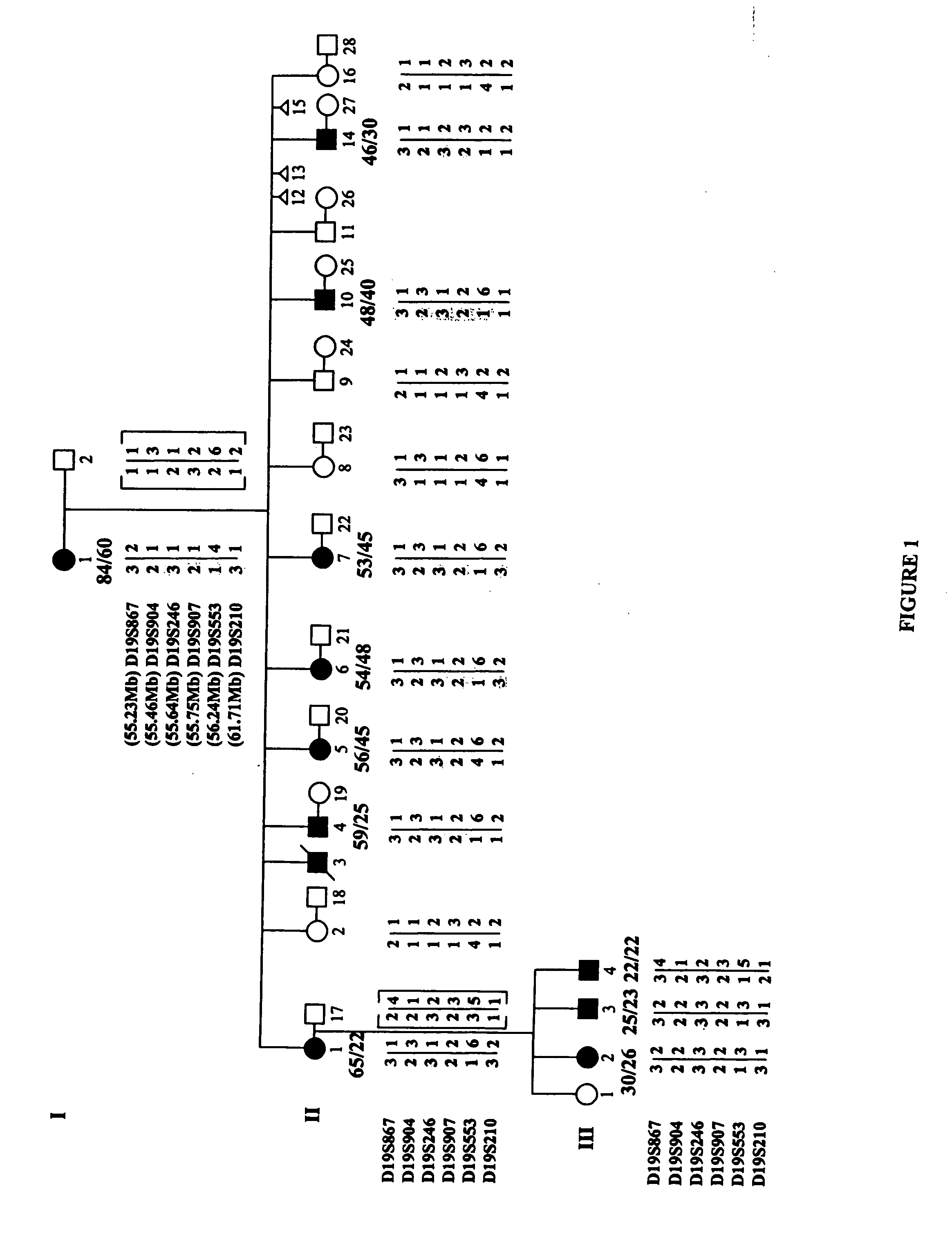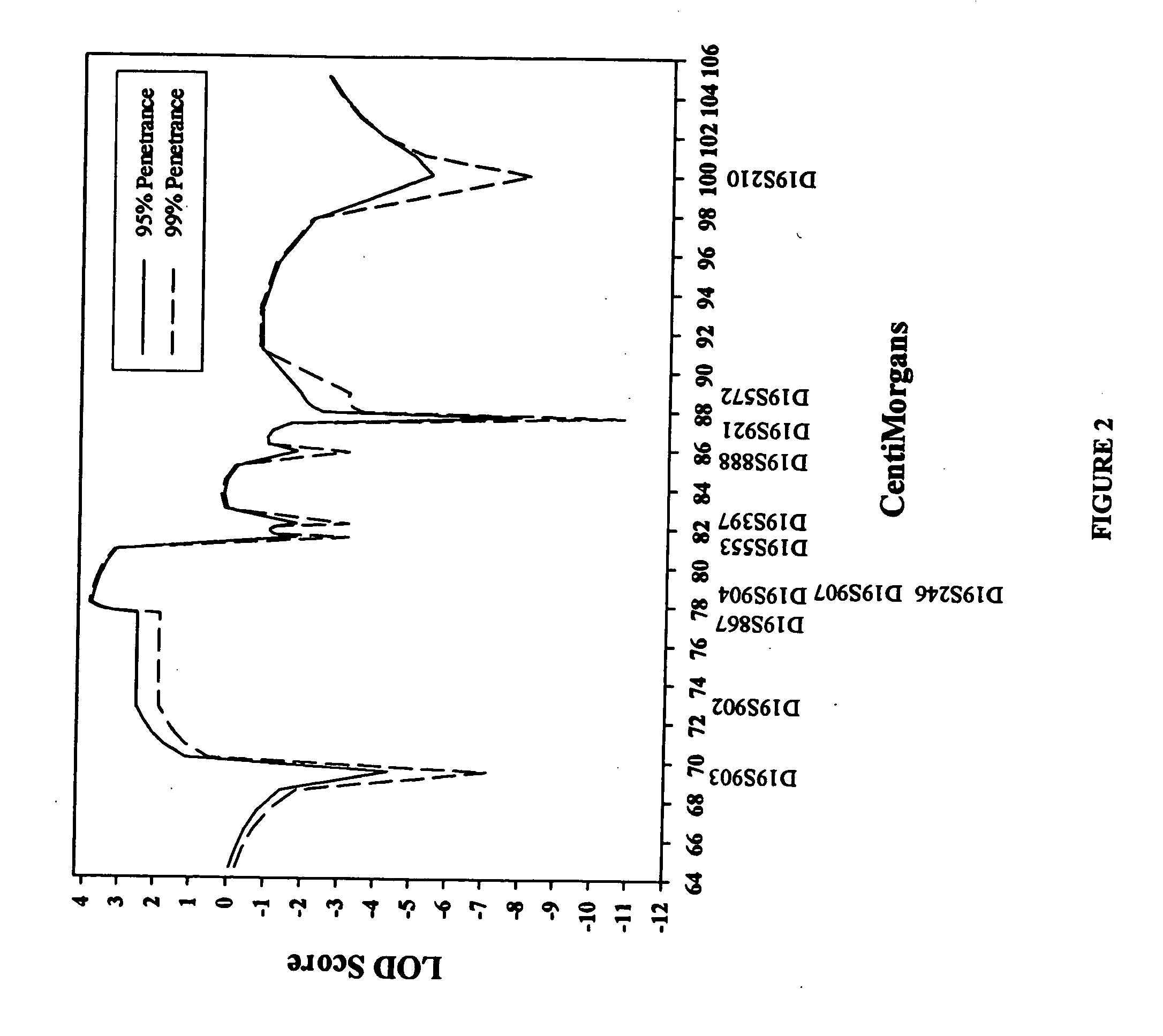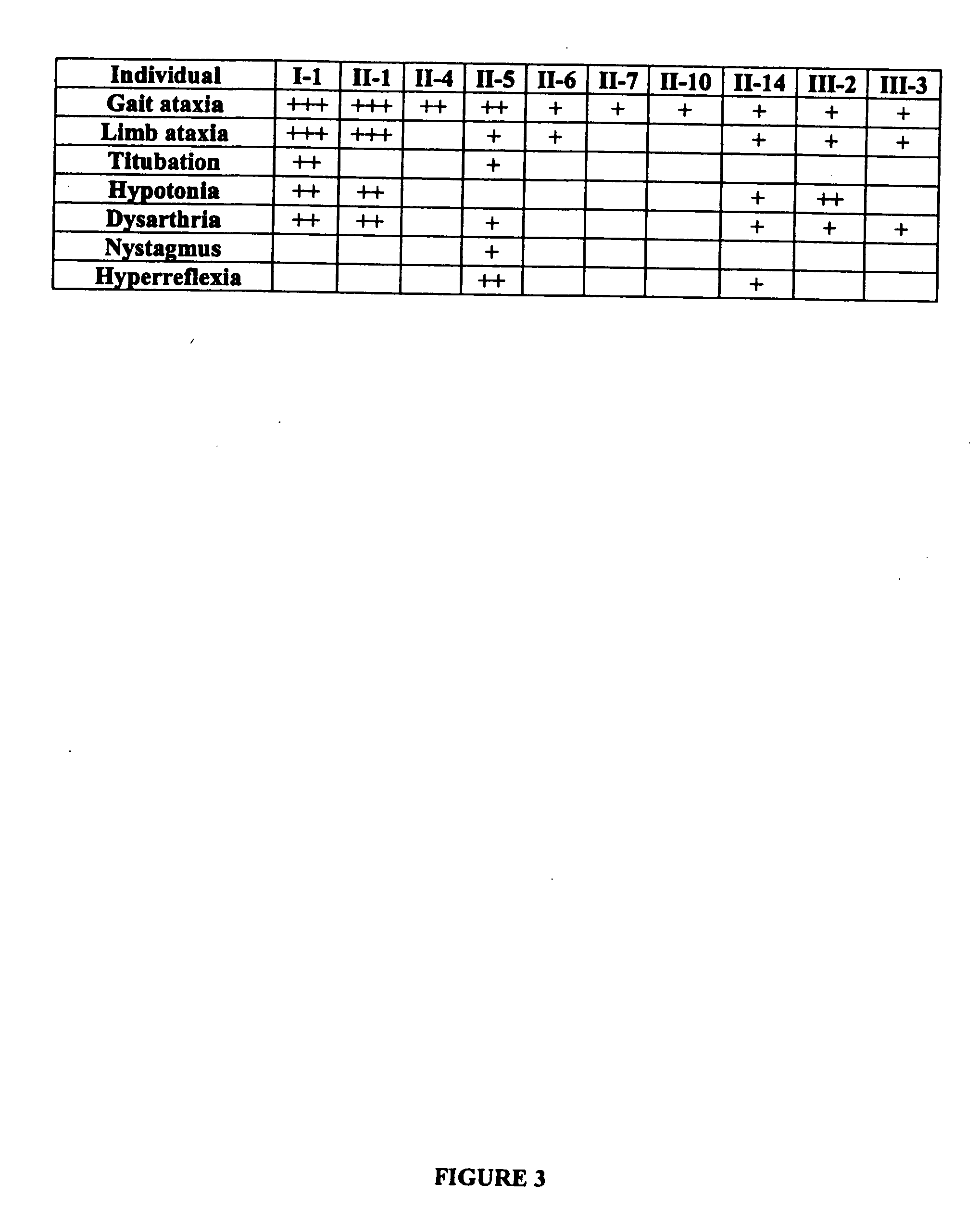Compositions and methods for spinocerebellar ataxia
a technology of spinocerebellar ataxia and composition methods, which is applied in the field of diagnostic and treatment of neurodevelopmental and neurodegenerative diseases, can solve the problems of difficult clinical characterization of the dominant scas
- Summary
- Abstract
- Description
- Claims
- Application Information
AI Technical Summary
Problems solved by technology
Method used
Image
Examples
example 1
[0048] Patients. A Filipino family segregating a dominant trait for cerebellar ataxia was examined. There were eleven affected individuals including the proband, seven individuals in generation two, and three individuals in generation three. In addition, there were five unaffected individuals in generation two, with one unaffected and nineteen at-risk individuals in generation three. Blood was collected and DNA extracted from fifteen family members after informed consent was obtained.
[0049] Mutation and linkage analyses. To further evaluate linkage in the 19q13 region, additional markers were typed in the proband, seven affecteds and four unaffecteds in generation two, and three affecteds in generation three. High-resolution mapping was performed by PCR amplification of dinucleotide repeat markers obtained in the region of 19q13 from the Ensembl genome browser (release 31.35d). The PCR products were analyzed by electrophoresis on a 6% denaturing polyacrylamide gel.
[0050] Sequence ...
example 2
[0053] Among voltage-gated K+ channels, the functional properties of Kv3 channels are distinct. Kv3 channels activate in a more depolarized range and close much more rapidly compared to other Kv channels (Rudy, B. & McBain, C. J. Kv3 channels: voltage-gated K+ channels designed for high-frequency repetitive firing. Trends Neurosci. 9, 517-526 (2001)). These properties facilitate high frequency firing of action potentials with little or no adaptation, a characteristic of neuronal populations found in the mammalian neocortex, hippocampus, auditory nuclei, and cerebellum. Like other voltage-gated K+ channels, Kv3 channels are tetramers. Different Shaw family subunits are able to co-assemble with each other, but not with subunits from other Kv subfamilies (Covarrubias, M., Wei, A., & Salkoff, L. Shaker, Shal, Shab, and Shaw express independent K+ current systems. Neuron 7, 763-773 (1991); Shen, N. V. & Pfaffinger, P. J. Molecular recognition and assembly sequences involved in the subfam...
example 3
[0057] Electrophysiology. The coding region of a human Kv3.3 cDNA clone (Rae, J. L., & Shepard, A. R. Kv3.3 potassium channels in lens epithelium and corneal endothelium. Exp. Eye. Res. 70, 339-348 (2000) was transferred into the Bluescript II SK vector. RNA was transcribed and injected into Xenopus oocytes for two electrode voltage clamp analysis using standard methods (Silverman, W. R., Tang, C. Y., Mock, A. F., Huh, K. B., & Papazian, D. M. Mg (2+) modulates voltage-dependent activation in ether-a-go-go potassium channels by binding between transmembrane segments S2 and S3. J. Gen. Physiol. 116, 663-677 (2000)). Currents were recorded 48 to 72 h post injection in a bath solution containing 4 mM KCl, 85 mM NaCl, 1.8 mM CaCl2, 10 mM HEPES, pH 7.2. To record tail currents, the bath solution was switched to 89 mM RbCl, 2.4 mM NaHCO3, 0.82 mM Ca(NO3)2, 0.41 mM CaCl2, 10 mM HEPES, pH 7.2. For dominant negative experiments, 1 ng of Kv3.3 or Shaker IR RNA was injected, in the absence or ...
PUM
| Property | Measurement | Unit |
|---|---|---|
| Electric potential / voltage | aaaaa | aaaaa |
| Selectivity | aaaaa | aaaaa |
Abstract
Description
Claims
Application Information
 Login to View More
Login to View More - R&D
- Intellectual Property
- Life Sciences
- Materials
- Tech Scout
- Unparalleled Data Quality
- Higher Quality Content
- 60% Fewer Hallucinations
Browse by: Latest US Patents, China's latest patents, Technical Efficacy Thesaurus, Application Domain, Technology Topic, Popular Technical Reports.
© 2025 PatSnap. All rights reserved.Legal|Privacy policy|Modern Slavery Act Transparency Statement|Sitemap|About US| Contact US: help@patsnap.com



